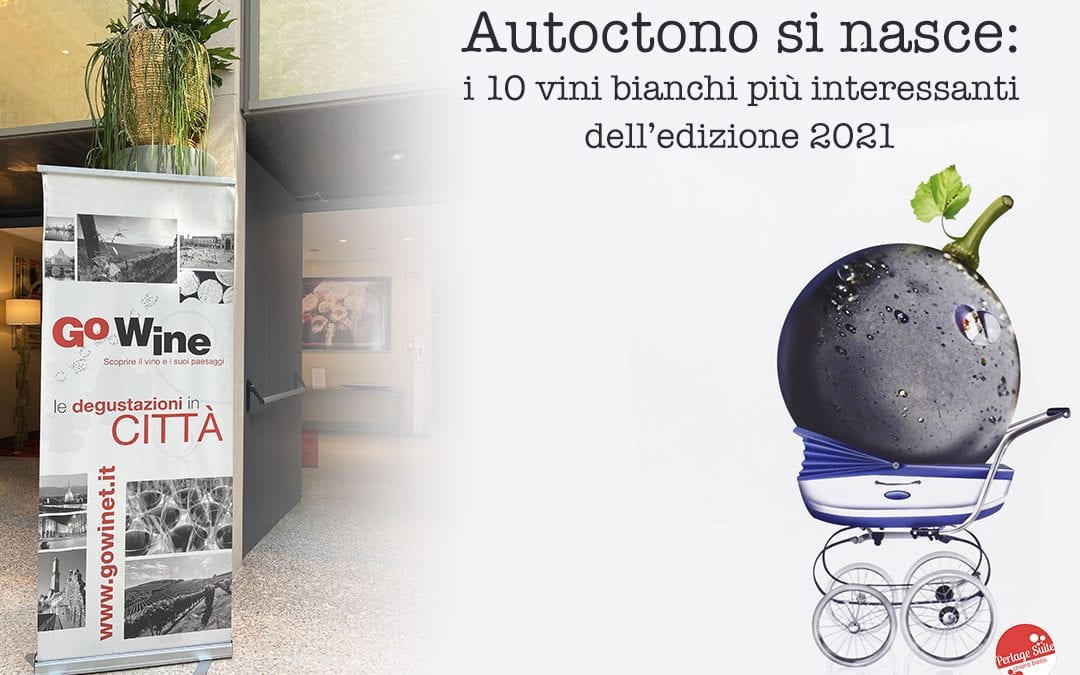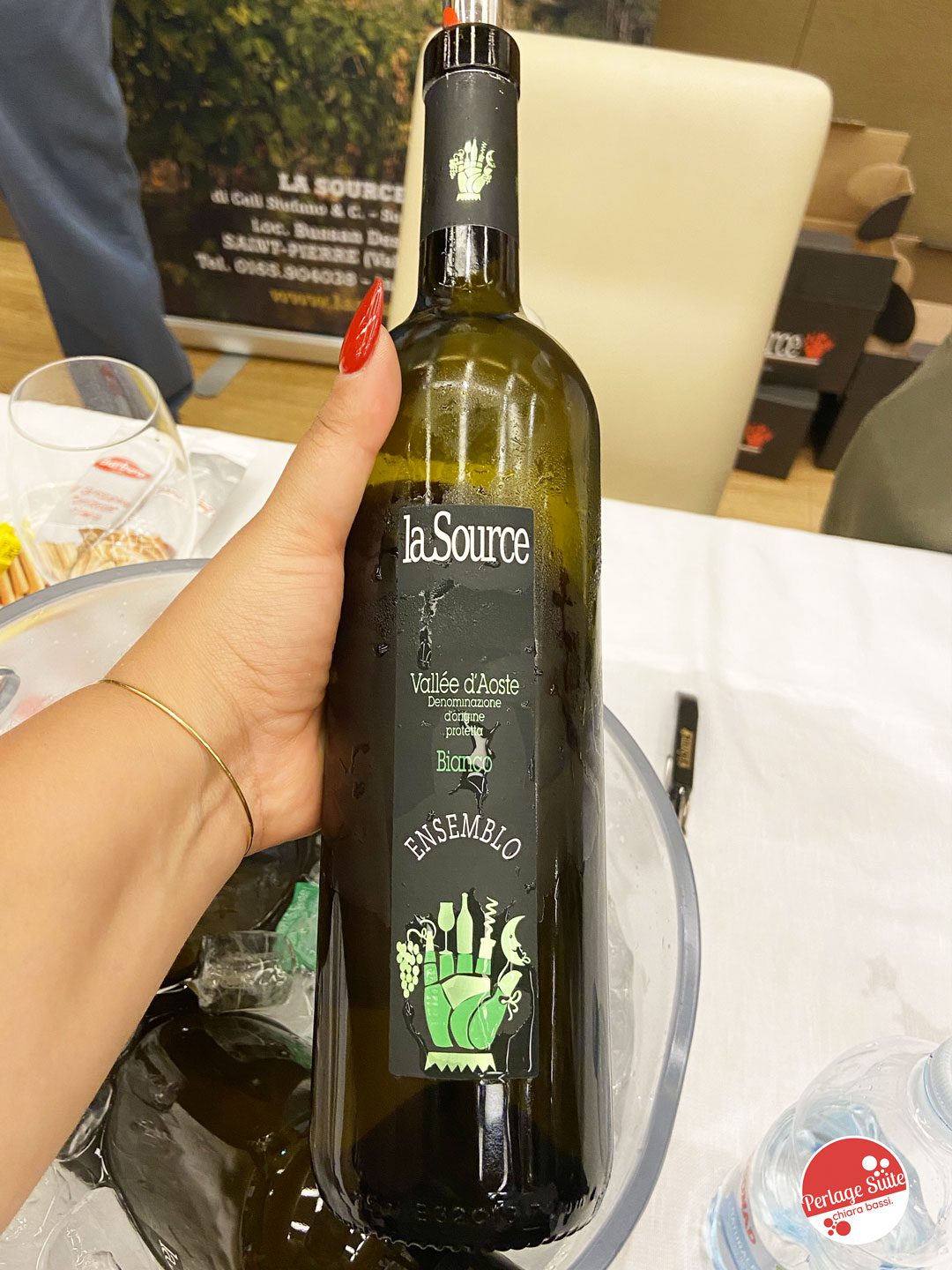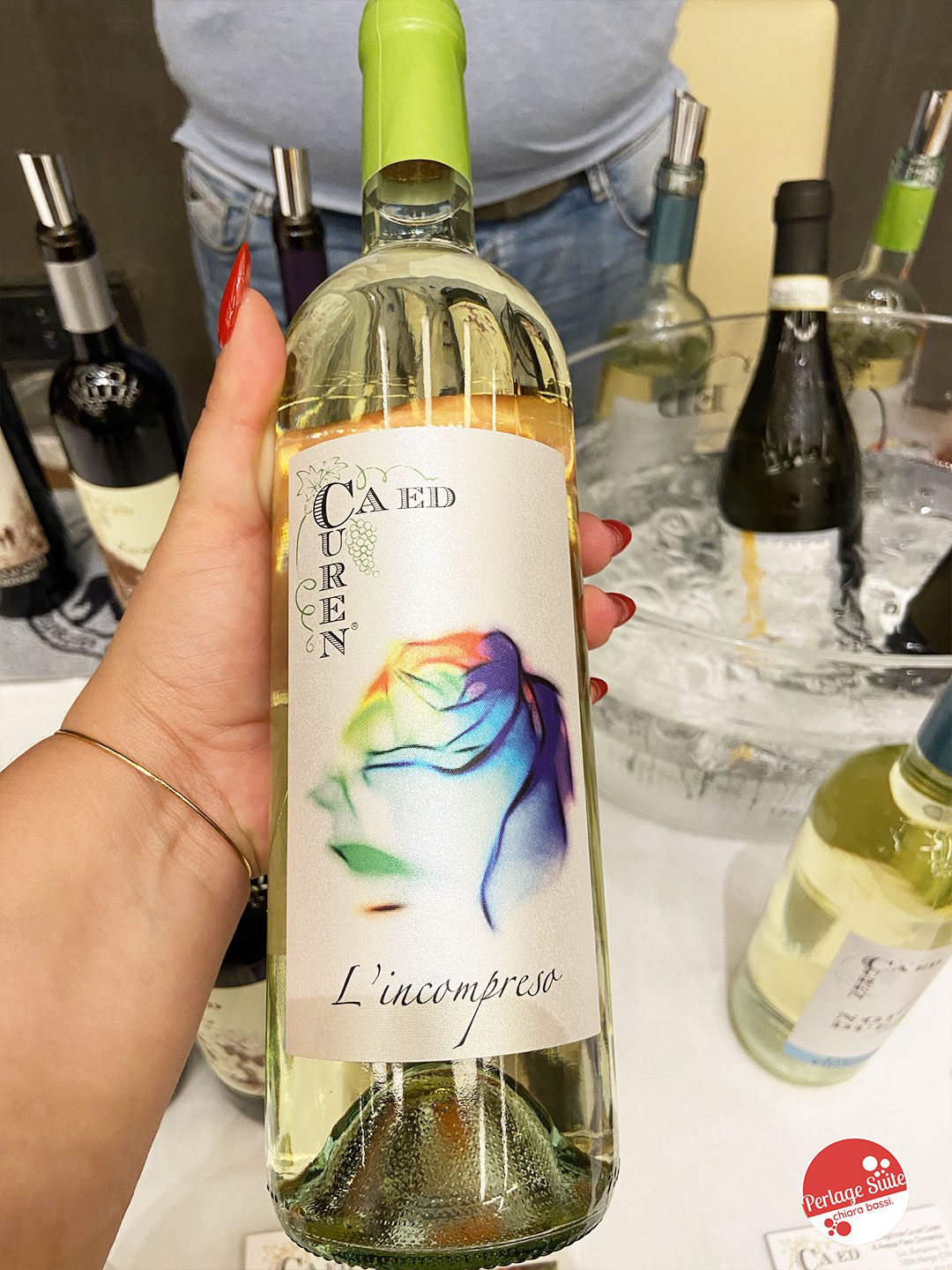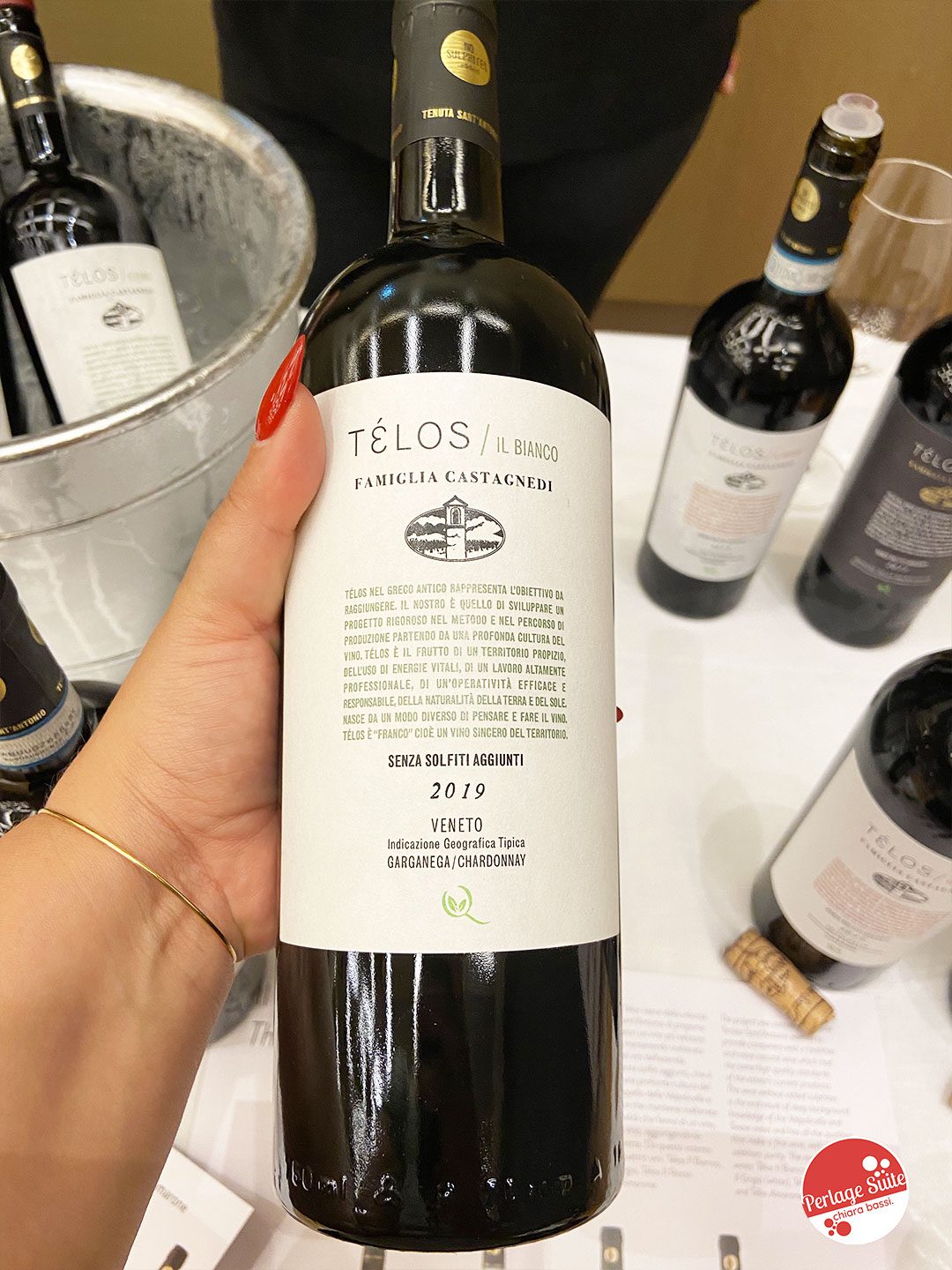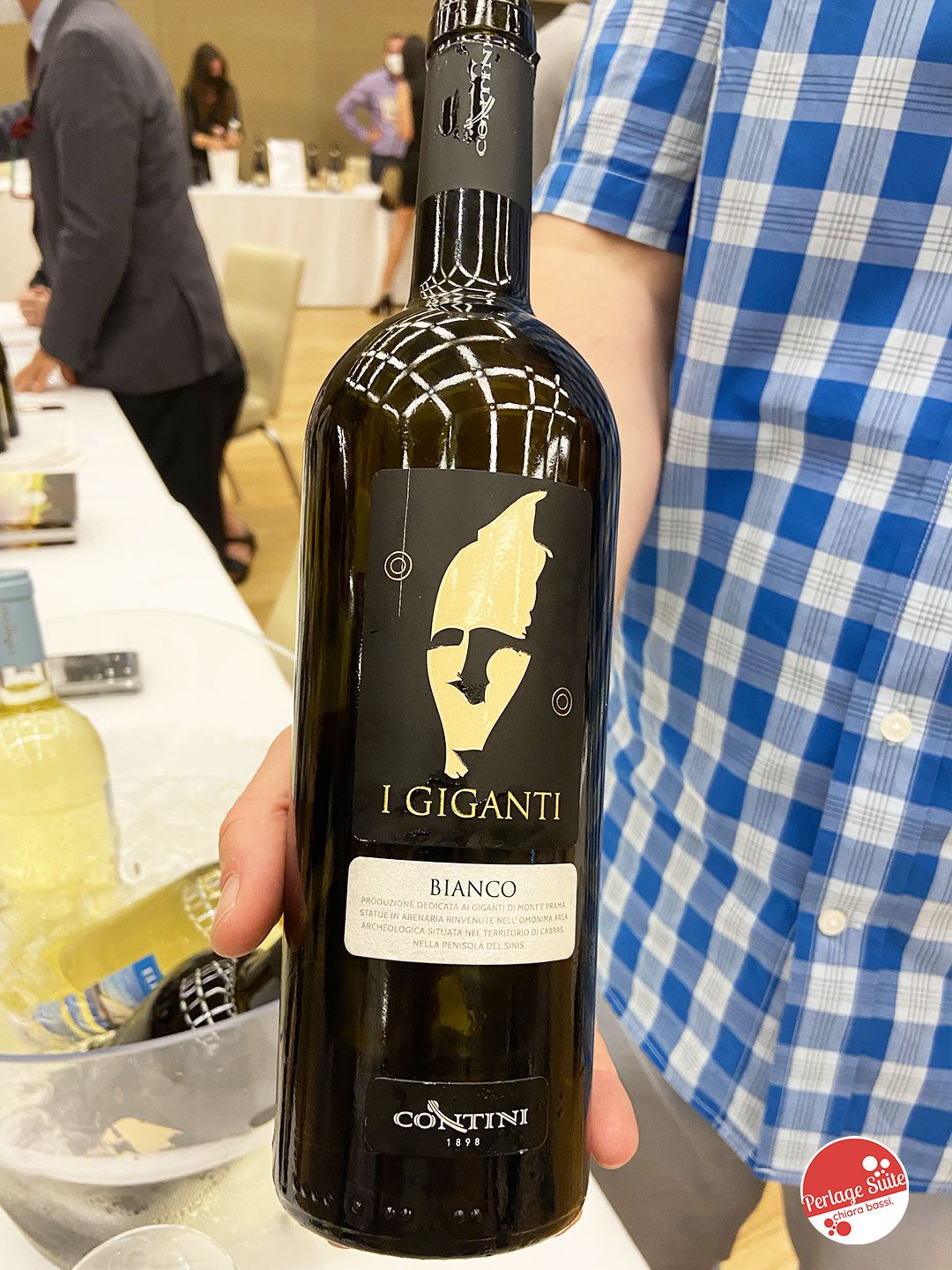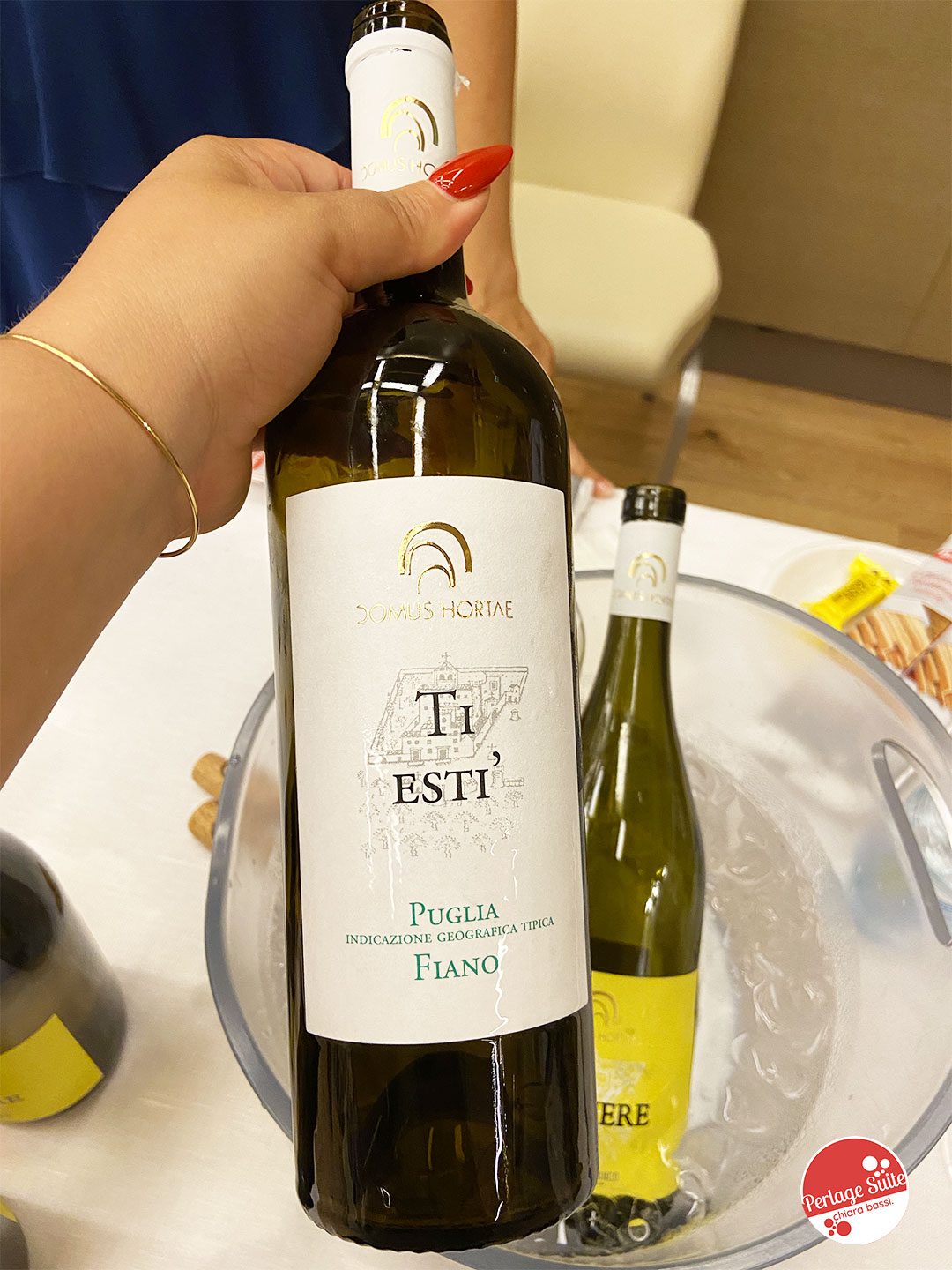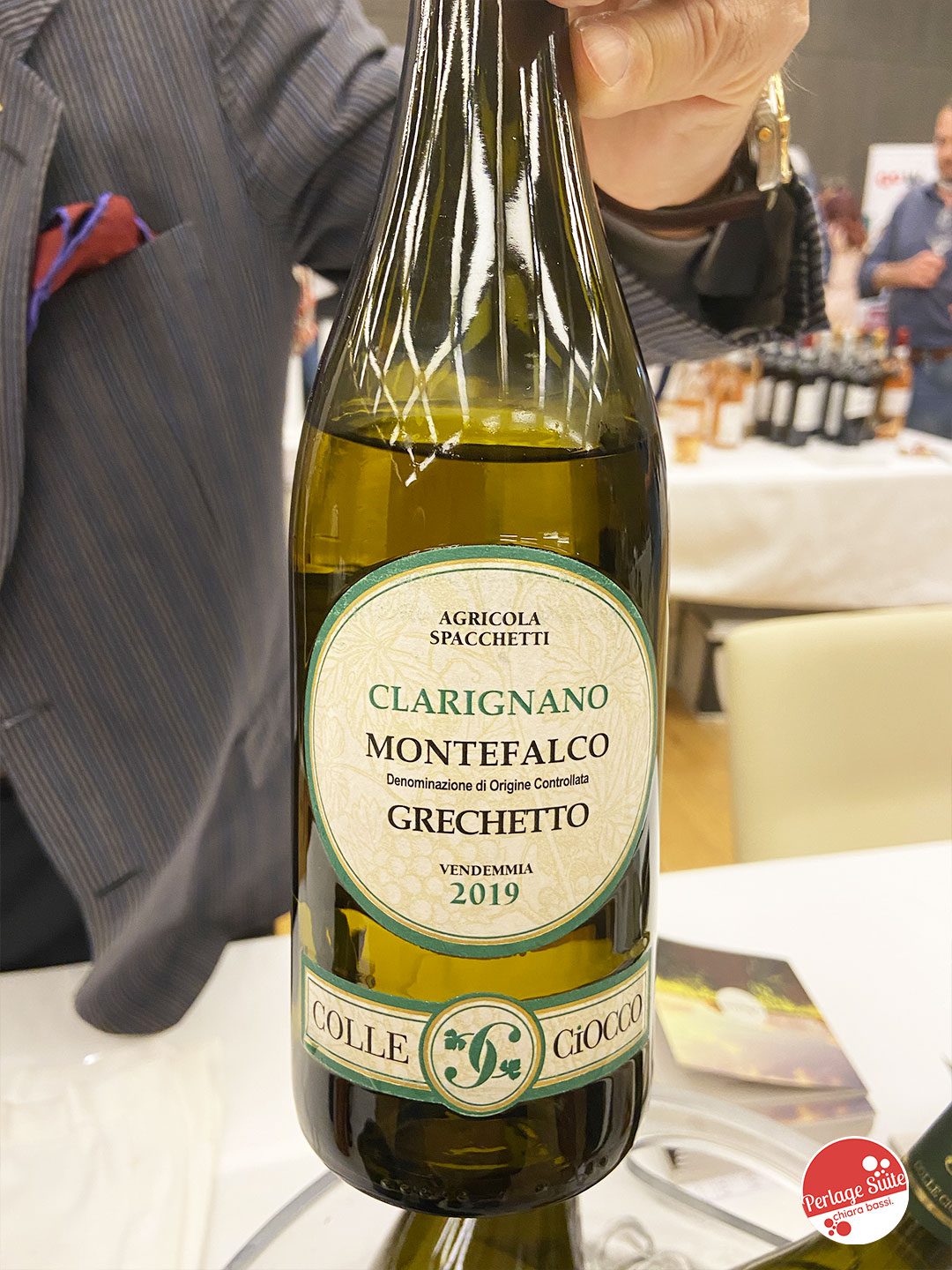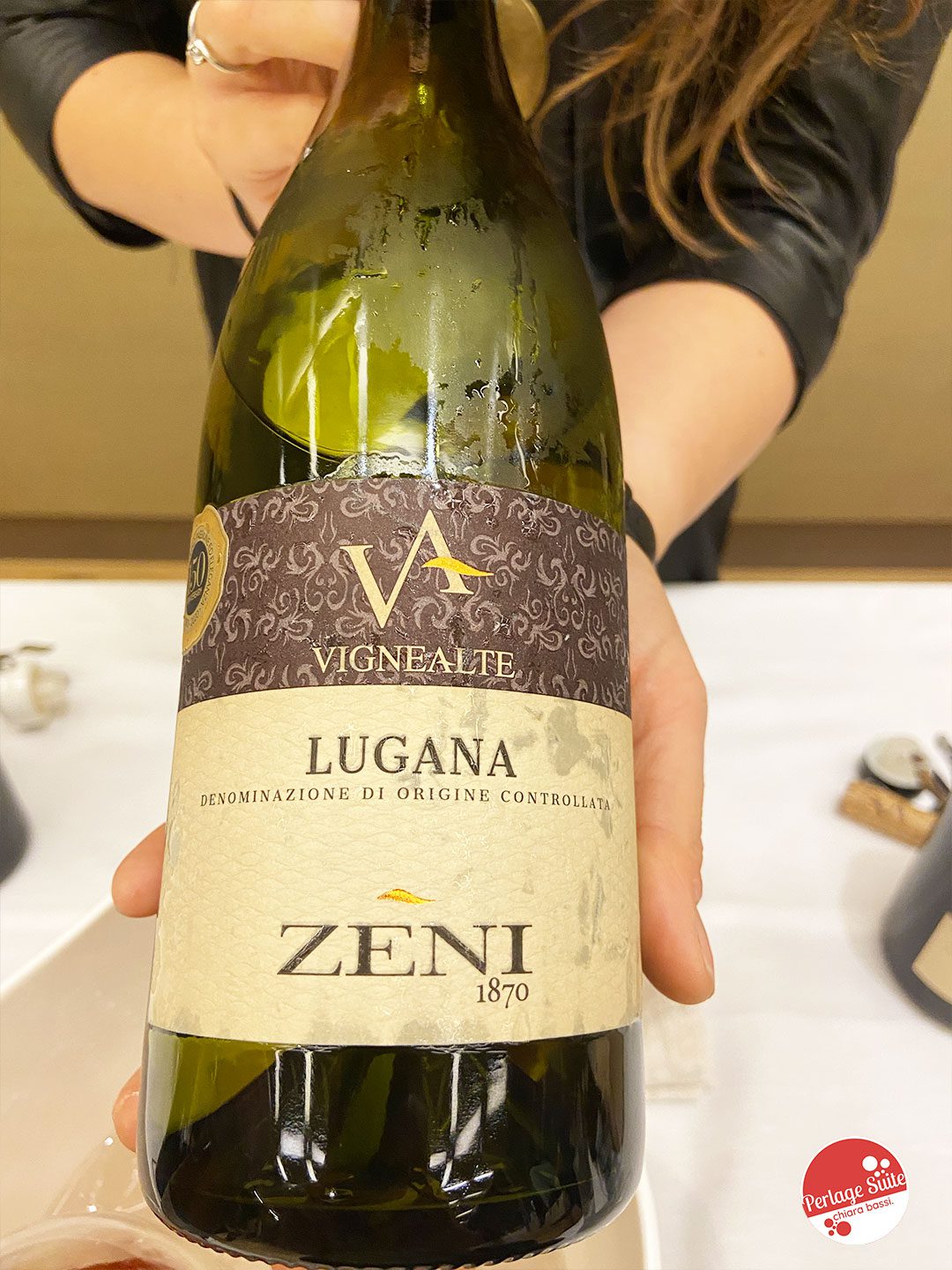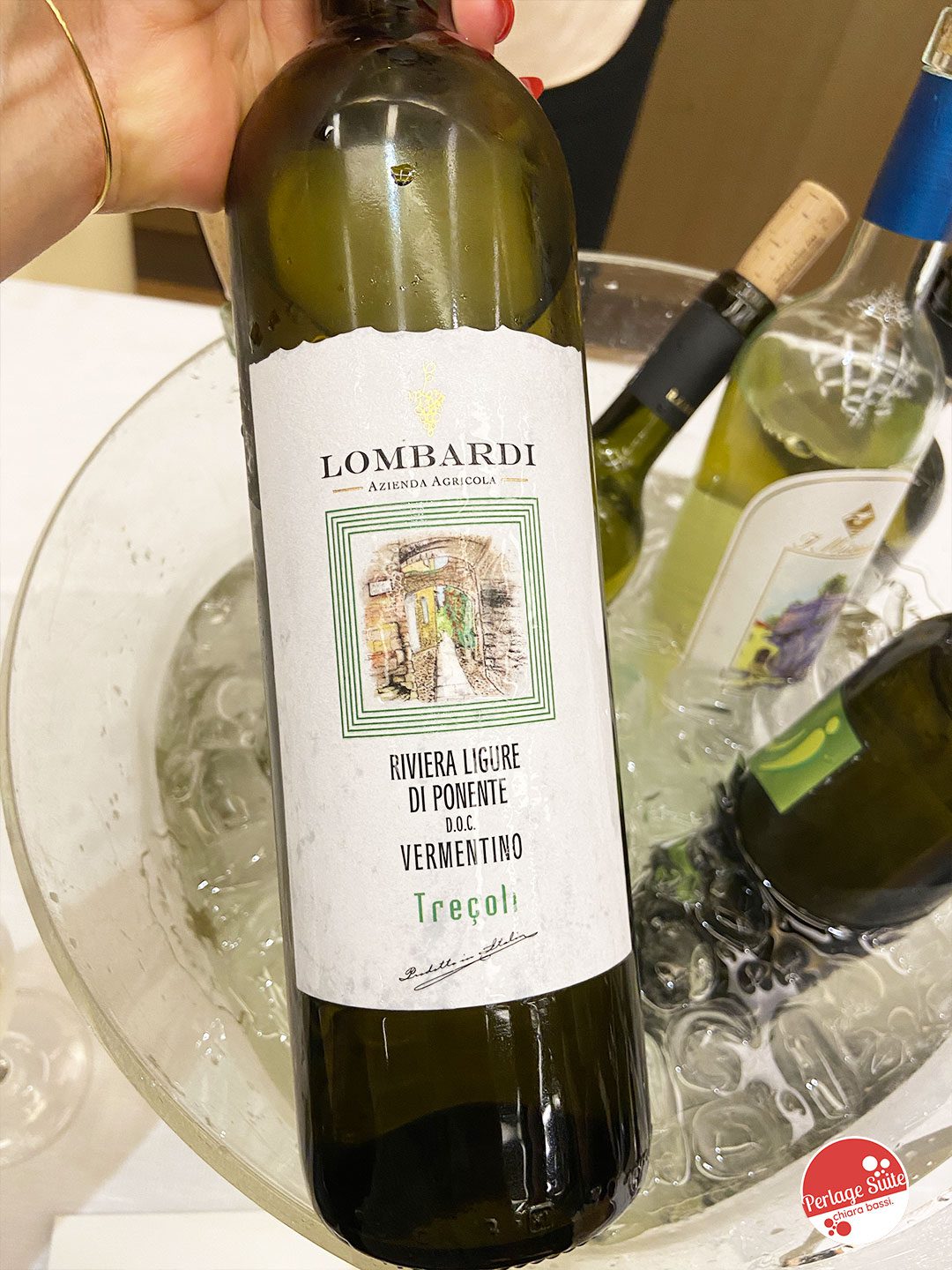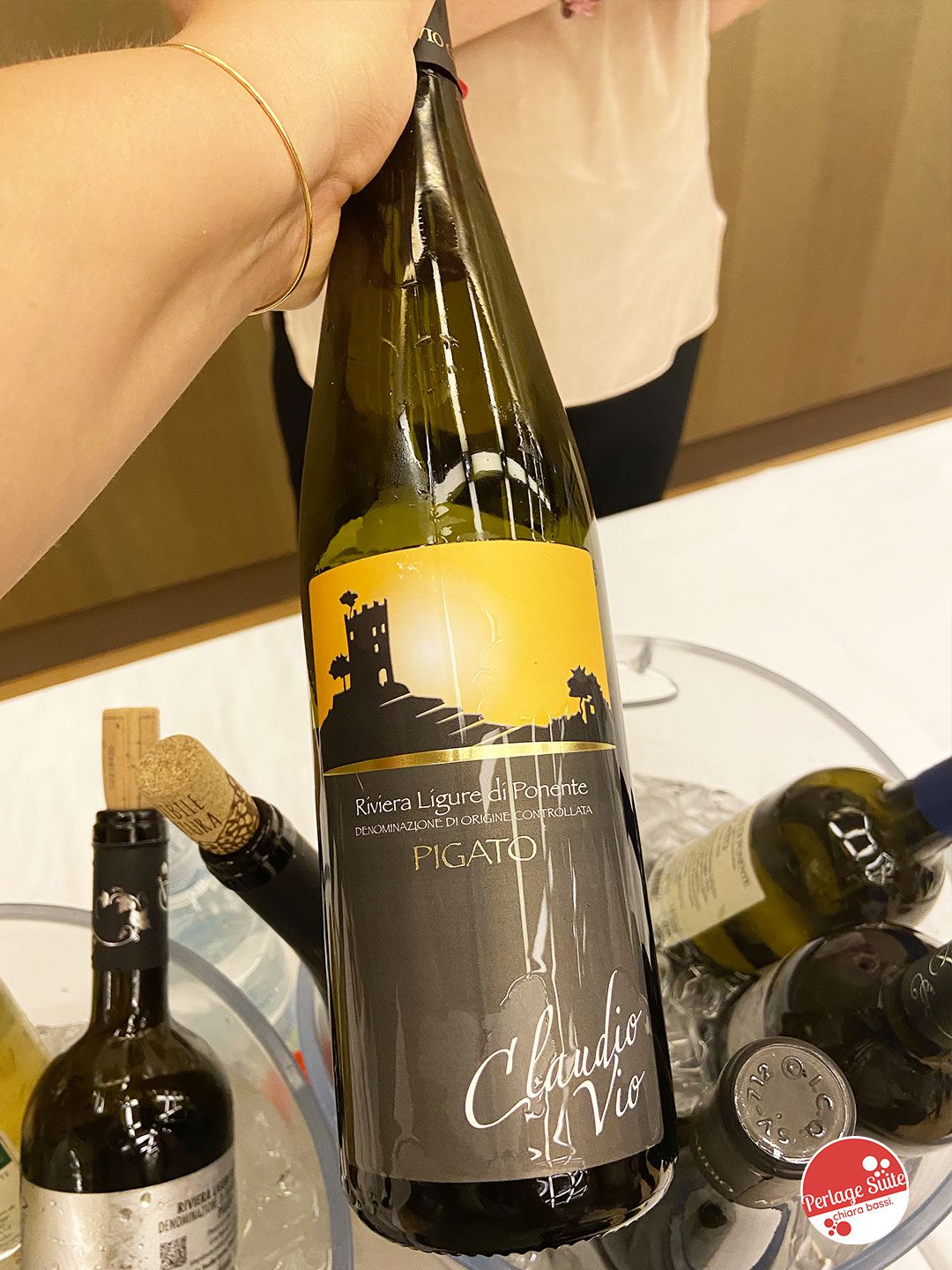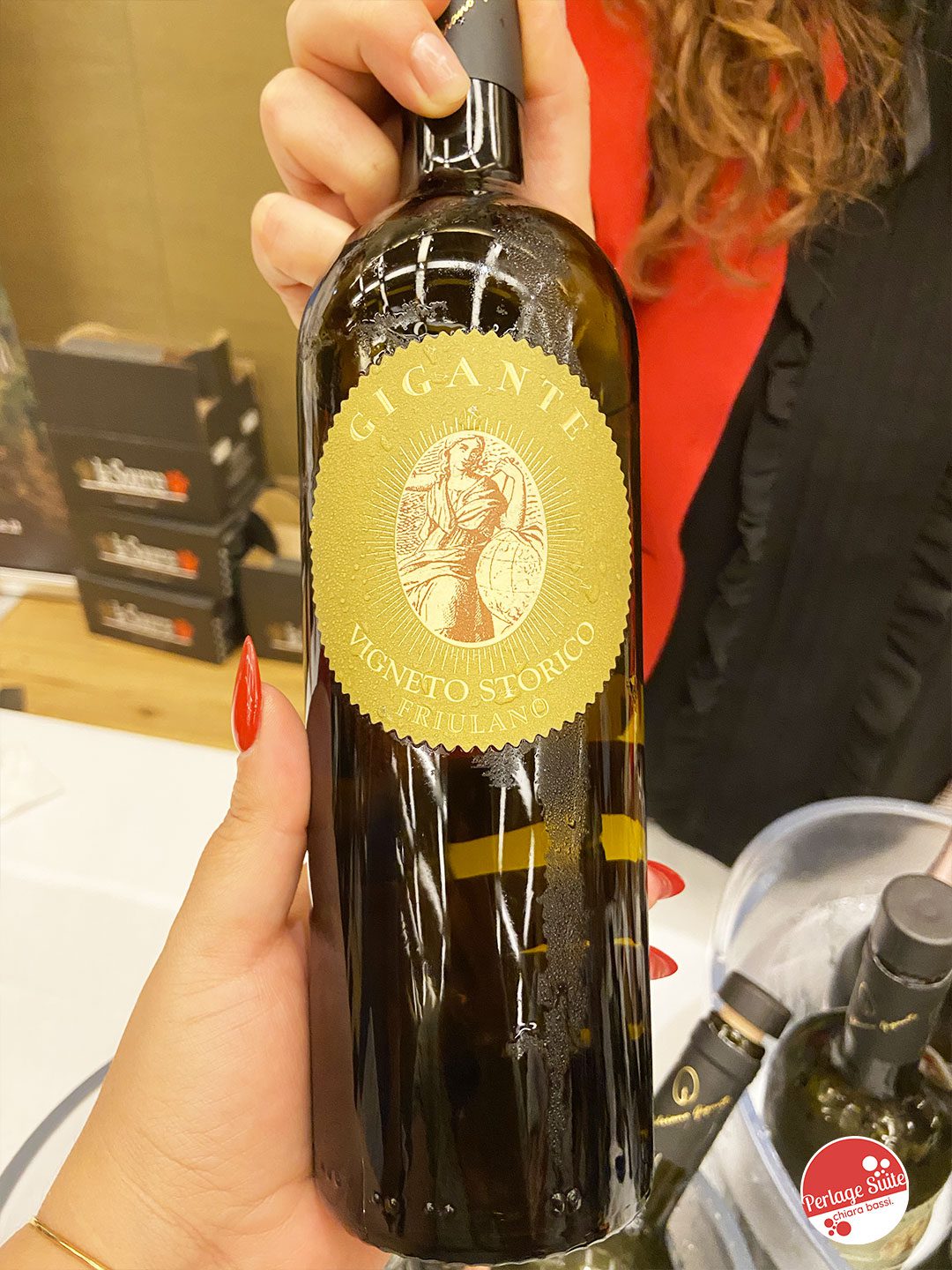Autoctono si nasce 2021 by Go Wine is one of my favourite events. There are so many interesting tidbits and the press preview is always 'taster-friendly', meaning I can take all my notes calmly. Unfortunately, the tasting in shifts did not allow me to taste everything so, since I normally give more space to bubbles, especially classic method, for this 2021 edition in Milan I decided to favour white wines. And I tasted them all, really all! I exceeded the maximum time allowed by a few minutes, but proudly I succeeded! Not only that, I drew up a real tasting ranking of the wines I liked best. I ask you to read it with an emotional eye because, being different wines from different regions and made with different indigenous grape varieties, I certainly cannot make comparisons. So consider it pure subjective pleasure of my palate!
#1 Autochthonous is born 2021: 'Ensemblao' 2017, La source
Tasting notes. It has a beautiful, bright, golden yellow colour. The nose is reminiscent of an Alsatian gewurztraminer and is simply crazy. It goes wonderfully with oysters and blue cheeses.
Indigenous grape variety. Muscat, gewürztraminer e müller-thurgau come together to create a masterpiece. They are not exactly indigenous to the Valle d'Aosta, but white Muscat and Müller-Thurgau are so long established in the region that they can now be described as almost autochthonous.
#2 Autochthonous one is born 2021: 'Misunderstood' 2020, Ca ed Curen
Tasting notes. Pale straw yellow and brilliant. The nose has more Sauvignon than Muscat notes. It is enriched with peach in syrup, pear and white chocolate. In the mouth it is balanced, coherently fresh and rather savoury.
Indigenous grape variety. The muscat is an aromatic white grape variety indigenous to Piedmont.
N.B On 23 January 2020 at Autoctono si nasce I had chosen this wine among the five I liked best. Discover the other goodies HERE.
#3 Autoctono si nasce 2021: "Telos Bianco" 2019, Tenuta Sant'Antonio
Tasting notes. Straw yellow with golden reflections, brilliant and consistent. The nose is intense, fragrant and very elegant. Notes of passion fruit, blood orange, white chocolate and Greek basil. In the mouth it is consistent, with great acidity, tanginess and plenty of structure. Long, citrusy finish.
Indigenous grape variety. La garganega is the native white grape variety of the provinces of Verona and Vicenza. A curiosity? DNA studies have shown that one of its clones is identical to Malvasia de Manresa, a practically extinct Spanish grape variety.
N.B. On 31 May 2019 I made a spectacular Telos verticalfrom the 2018 vintage to the 2012 vintage.
#4 Autoctono si nasce 2021: "Giganti Bianco" 2019, Contini
Tasting notes. Brilliant and consistent straw yellow. Crazy nose you can smell the cask, but it is not intrusive. Intense nose with notes of white chocolate, banana, macadamia nuts, dill. In the mouth it is consistent, crisp, fresh, warm savoury and with a long finish of mascarpone mousse.
Indigenous grape variety. Vernaccia e Vermentino come together in their native land: Sardinia.
#5 Autoctono si nasce 2021: "Ti Esti'" Fiano 2019, Domus Hortae
Tasting notes. Wonderful citrusy nose with notes of candied pear, candied citron, essence of lemongrass, lavender, chamomile, black tea (lots of it). In the mouth it is consistent with notes of lemon tea, very savoury and very fresh. Long finish of unsweetened black tea.
Indigenous grape variety. The minutolo is an aromatic white grape variety indigenous to Apulia that has always lived in the shadow of the much more famous Fiano di Avellino. In reality, they are two different grape varieties that for a long time were both called fianoin Valle d'Itria sometimes called Fiano Minutolo then since 2011 it finally makes its official appearance in the Agricultural Register only under the name minutolo. Cultivation is currently under observation in Basilicata.
#6 Autoctono si nasce 2021: Grechetto 2019, Colle Ciocco
Tasting notes. Brilliant straw yellow with golden hues. The nose is delicious with citrine notes of cocoa with candied lemon and ginger, violet, blood orange juice. In the mouth it is consistent and very balanced, particularly drinkable and with a long blood orange finish.
Indigenous grape variety. The grechetto is a grape variety widespread in Umbria and throughout central Italy. It is also cultivated in Emilia where Pignoletto DOCG is made, but I prefer its still expressions.
#7 Autoctono si nasce 2021: 'Vigne Alte' Lugana 2020, Zeni 1870
Tasting notes. Classic Lugana style. very fat, consistent, turbine nose with a hint of apricot. In the mouth it is fresh and very savoury, very pleasant.
Indigenous grape variety. Trebbiano di Soave is also known as Trebbiano di Lugana, Turbiana, Verdicchio Bianco.
#8 Autoctono si nasce 2021: 'Torcoli' Vermentino 2019, Lombardi
Tasting notes. Brilliant and consistent straw yellow. The nose is mineral with particularly interesting notes of hydrocarbons. Notes of pear, honey, mon cheri, melted butter. In the mouth it is fresh, very savoury, structured and warm. Long honeyed finish.
Indigenous grape variety. The vermentino is a very famous grape variety cultivated mainly in Sardinia, Liguria, Tuscany and Piedmont (under the name Favorita), where it can be defined as indigenous. To express itself best, it needs to be grown along the coast, preferably at altitude.
#9 Autoctono si nasce 2021: Pigato 2020, Claudio Vio
Tasting notes. Brilliant straw yellow, consistent. Characteristic pigato nose, without smearing. Floral and buttery nose, with notes of honey, sugared almond and jasmine. In the mouth it is consistent, fresh, very savoury and long.
Indigenous grape variety. The pigato is a white grape variety of Greek origin that arrived in Liguria during the Middle Ages.
N.B. I had the pleasure of staying at the Vio family's delightful agriturismo during a wonderful evening of Stars & Goblets with chef Tommaso Arrigoni organised by Vite in Riviera. I would really like to go back! 😍
#10 Autoctono si nasce 2021: Vigneto Storico Friulano 2019, Gigante
Tasting notes. Brilliant straw yellow an excellent and particularly mineral Friulano. On the nose peach, pear, violet, apricot, black cherry fade into a salty finish. In the mouth it is very fresh and savoury. Long almondy finish. It goes well with shellfish and lake fish, best raw.
Indigenous grape variety. Once called tocai, today it is simply called Friulian following a legal dispute with the noble Hungarian wine Tokaji made from the furmint grape variety. Curiously then, it seems that it is actually Italian Tokay, brought to Hungary as a marriage dowry by the Friulian noblewoman Aurora Formentini in 1632. So, if it is not clear, it seems that we can no longer call our grape variety and the wine produced Tocai because in assonance with the Hungarian Tokaji that would actually be made from Italian tocai. Help 😅 This white grape variety is cultivated in Friuli-Venezia Giulia and Slovenia.
Bonus: Do you like Japanese? Try Sushi Kobbo in Milan!
How I love sushi... and how I love the ACE formula! However, finding quality all you can eat sushi is more difficult than finding an '85 Sassicaia in the cellar. I have my point of reference in Milan which is Jin SushiHowever, Mondays are closed and I found myself at a loss with an absurd chemical hunger. So while browsing through the various proposals I found Sushi Kobbo... and I must say that in the end I liked it at least as much as Jin Sushi. Incredible quality between typical and fusion in a well-kept environment with very comfortable seats. Consider 60€ for 2 excluding wine to enjoy a truckload of delicious sushi and sashimi. I recommend the lobster uramaki, the eel nigiri and all the sashimi. I can't wait to go back!
I really hope you will taste these wines... my side I promise myself to visit some of these wineries as soon as possible because I am convinced that there is much more good to taste!
Do you know any of these wineries? If so, scroll down the page and tell me in a comment! 🤩
Cheers🍷
Chiara
P.S. Discover the wines I liked best at Autochthonous is born 2020!

